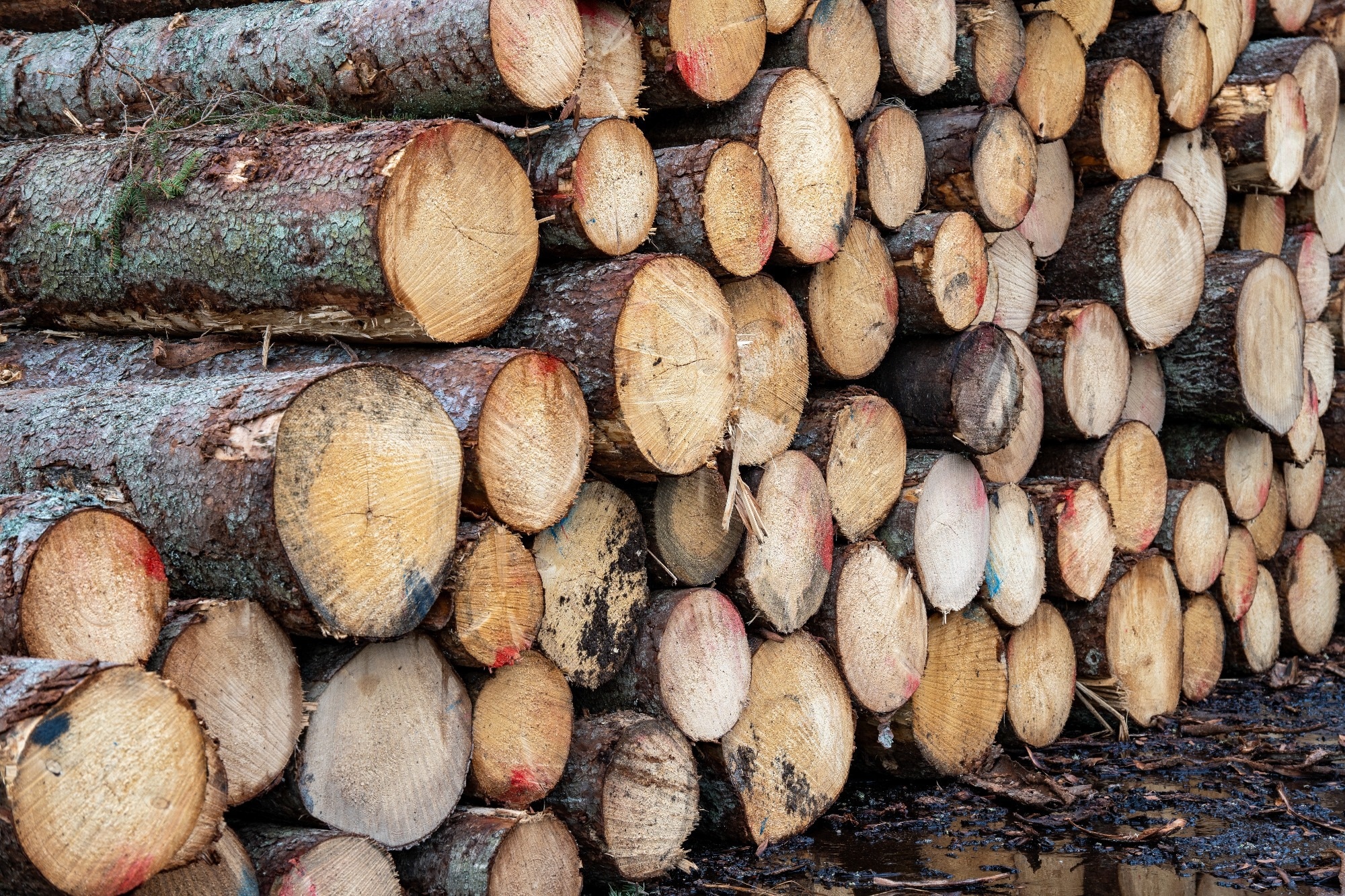A new study in Nature Communications finds that scaling up the use of mass timber products - especially cross-laminated timber (CLT) - could significantly increase global carbon storage and promote more sustainable forest management.
 Study: Global land and carbon consequences of mass timber products. Image Credit: Edijs K/Shutterstock.com
Study: Global land and carbon consequences of mass timber products. Image Credit: Edijs K/Shutterstock.com
As the world races to limit global temperature rise to 1.5 °C or 2 °C by 2100, decarbonizing both industrial systems and the built environment is critical. One promising strategy lies in rethinking the materials we use to construct buildings. Mass timber products like CLT are gaining momentum as renewable alternatives to carbon-intensive materials such as steel and concrete.
While previous studies have shown the carbon-saving potential of mass timber at the product level, questions remain about the broader implications, particularly how rising demand might impact forest use, carbon cycles, and greenhouse gas (GHG) emissions over time.
This new research addresses those gaps with an interdisciplinary approach that integrates ecological modeling, economic forecasting, and life cycle assessment (LCA).
Modeling the Future of Mass Timber
To understand the long-term carbon impacts of adopting CLT on a global scale, the researchers developed a modeling framework that combines the Global Timber Model (GTM) - which simulates land use and forest economics - with detailed LCA data. The analysis spans the years 2020 to 2100 and compares three CLT adoption scenarios against a baseline in which no CLT uptake occurs.
The three scenarios vary by demand level and adoption speed:
- Medium demand, fast adoption.
- Medium demand, slow adoption.
- High demand, fast adoption.
Inputs were drawn from Shared Socioeconomic Pathway 2, a scenario that reflects middle-of-the-road assumptions about global development, including population growth, economic trends, and urbanization.
GTM was used to project changes in land use (including farmland, plantations, and natural forests), shifts in forest management intensity, and resulting changes in forest carbon stocks.
In parallel, LCA was used to track carbon flows through the entire life cycle of wood products - capturing emissions from manufacturing, long-term storage in buildings, end-of-life scenarios, and the carbon benefits of replacing high-emission materials like cement and steel.
Key Findings: Carbon Storage and Land Use
The study found that while the direct GHG emissions from increased CLT production (as captured by LCA) would rise slightly, by 1.6 to 2.4 GtCO2e by 2100, those increases would be more than offset by emissions reductions from avoided cement and steel use and energy recovery from wood waste.
When all factors are considered, total GHG emissions could fall by 1.9 to 9.7 GtCO2e, translating to a net reduction of 7.1 % to 24.7 % in cumulative emissions by century’s end.
The most substantial carbon gains, however, were linked to forest dynamics. Higher wood prices driven by CLT demand incentivize landowners to plant new forests and intensify management of existing ones.
By 2100, plantation forest area is projected to increase by 11 to 14.7 million hectares, while managed forestland could grow by 27.9 to 40.8 million hectares. Although some natural forestland is expected to decline (by 8.1 to 18.9 million hectares), the overall effect is a net increase in forest area and stored carbon.
Cumulatively, forest carbon stocks are projected to rise by 16.1 to 17.7 GtCO2e, with another 3.2 to 7.4 GtCO2e stored in wood products and their end-of-life stages. Total carbon stock gains could reach 20.3 to 25.2 GtCO2e, depending on the scenario. Meanwhile, life-cycle GHG emissions reductions were estimated at 25.6 to 39.0 GtCO2e. Across all scenarios, 65 % to 82 % of these emission cuts come from increased carbon storage in forests, products, and landfills.
What This Means Going Forward
By integrating economic modeling with environmental analysis, the study presents one of the most comprehensive looks to date at how large-scale CLT adoption could reshape land use and help meet global climate goals. The findings suggest that mass timber doesn’t just store carbon - it also drives positive land-use shifts by encouraging reforestation and better forest management.
Even though some carbon is lost due to reduced production of conventional wood products, the net gain in carbon storage, especially in forests and long-lived timber products, makes a compelling case for broader CLT adoption. According to the authors, policies that support this transition, such as subsidies or building code incentives, could accelerate the climate benefits.
Journal Reference
Lan, K., Favero, A., Yao, Y., Mendelsohn, R. O., & Wang, H. S.-H. (2025). Global land and carbon consequences of mass timber products. Nature Communications, 16(1). DOI: 10.1038/s41467-025-60245-y, https://www.nature.com/articles/s41467-025-60245-
Disclaimer: The views expressed here are those of the author expressed in their private capacity and do not necessarily represent the views of AZoM.com Limited T/A AZoNetwork the owner and operator of this website. This disclaimer forms part of the Terms and conditions of use of this website.